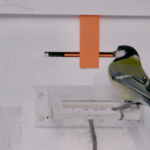“`html

Recently, Dyson introduced its much-anticipated Airstrait tool, a revolutionary hair straightener designed to transform wet hair into dry and straight locks without causing heat damage. This innovation has generated excitement among beauty enthusiasts, particularly within the natural hair community that has often struggled with products claiming to cater to afro-textured hair. While Dyson is known for its sleek marketing strategies, a recent advertisement featuring a model with 4C hair ignited controversy.
The now-removed video showcased a Black model with tightly coiled curls using the Airstrait’s wet-to-dry functionality. However, after one application on her hair, the results were underwhelming—her curls appeared slightly looser but not fully straightened.
Despite Dyson’s reputation for inclusivity through various attachments catering to different hair types and their commitment to protecting damaged or brittle strands (common issues faced by those with 4C textures), many Black consumers expressed dissatisfaction with the ad’s portrayal of the product’s effectiveness.
As social media buzzed about this incident, viewers shared their discontent. One user on X remarked, “Dyson knows they messed up,” while another criticized them for showcasing an unsuitable product for textured hair instead of acknowledging it directly. Some even speculated whether the device was operational during filming.
This raises an important question: Does the Airstrait truly work on 4C textures or is this merely another instance of brands superficially addressing inclusivity without delivering real solutions?
Dyson’s Response to Criticism
Priced at £449.99, the Airstrait represents a significant investment, leading consumers—especially those with textured locks—to expect substantial results from its claims of transforming wet strands into sleek styles. However, many felt that the advertisement failed to instill confidence in its performance capabilities. Beyond concerns about efficacy lies a broader issue regarding how brands approach inclusivity; often it feels like they are simply checking off boxes rather than genuinely understanding and meeting diverse needs.
In response to public outcry regarding their marketing approach and product demonstration effectiveness, Dyson issued a statement emphasizing that their tools are designed for all types of hair textures: “The Dyson Airstrait™ is engineered specifically for coily textures as part of your styling routine or as an option for stretching your curls if desired.” They acknowledged that this particular social media clip did not effectively showcase these features and subsequently removed it from circulation.
Customer Perspectives on the Dyson Airstrait
Contrasting opinions emerge from various natural hairstylists and influencers who have praised the tool’s performance despite recent controversies surrounding its marketing strategy.
“It absolutely lives up to what it promises,” asserts entrepreneur Josiane Konaté (@josianekonate). “This isn’t just any flat iron—it transitions your damp or dry tresses into smooth strands without damaging heat.” She believes that criticism directed at Dyson may be misplaced since she finds that when used correctly—sectioning smaller portions—the tool can indeed straighten 4C texture effectively in one pass if desired lengthening requires additional passes.”
The Dyson Airstrait operates at a rapid pace, delivering airflow at a rate of 100 liters per second to reduce heat damage. It features self-cleaning capabilities upon activation, along with wet, dry, and boost modes that allow users to select their preferred temperature settings. Here’s how I style my wet 4C hair: I begin with the wet mode set to the highest temperature for the initial pass and then switch to a lower setting for subsequent passes. Achieving my desired look took about four passes in total. Given that 4C hair has the tightest curl pattern, here are some helpful tips:
- Divide your hair into small sections.
- Utilize a diffuser to quickly dry your roots.
- Take your time transitioning from roots to ends.
I’ve also found that using a comb before styling with the Airstrait significantly improves results. This was my quick look for an evening out with my husband! What do you think?
The question arises: what went wrong in user expectations? Many may have anticipated results akin to a silk press—characterized by extremely flat, straight, and shiny hair—rather than simply stretched or “blown out” afro textures. However, Dyson has never claimed such outcomes in its advertising materials. The Airstrait is engineered specifically to reduce both drying and styling times while protecting hair from excessive heat exposure. Unlike traditional flat irons that can reach temperatures up to 450°C, this device maxes out at 320°C only in boost mode; its standard maximum is 285°C. Its intelligent heat control technology ensures it doesn’t overheat and cause damage since it employs high-pressure airflow instead of hot plates typical of conventional straighteners.
While Dyson does feature models with 4C hair in its marketing campaigns, it does not guarantee silk-press-like smoothness—which could explain some consumer dissatisfaction. For those seeking ultra-straight styles on afro-textured hair types using this tool might need alternative solutions.
The reality is that afro-textured hair varies widely in texture and curl pattern; thus results will differ based on individual characteristics. As noted by Josiane: “The outcomes shown are realistic for type 4A/B/C curls; they would yield straighter results on type 3 curls.” This indicates an honest representation from Dyson without misleading claims regarding performance.
Navigating Expectations When Using the Airstrait for Afro Hair
Certain skeptics argue that consumers should temper their expectations when selecting tools designed for afro-textured locks: “What should one expect from unblow-dried 4C hair on first use?” questioned one user on social media following criticism of product performance feedback. Another chimed in stating it’s reasonable based on prior experiences with other products achieving similar effects but felt this particular tool lacked sufficient heat settings.
I believe suggesting Black consumers adjust their standards when purchasing premium tools is unreasonable; expecting effective performance shouldn’t come attached with caveats about managing expectations just because they’re investing more money into these products.
“We should never feel compelled to lower our standards regarding beauty tools,” Josiane asserts passionately as she highlights how many options now exist catering specifically towards textured hairstyles today compared against past offerings where choices were limited or non-existent altogether.” If brands market themselves as suitable solutions yet fail deliver satisfactory outcomes—that constitutes false advertising!
This ongoing narrative surrounding textured hairstyles being treated as secondary within beauty marketing perpetuates harmful implications suggesting Black women ask too much when assuming advertised efficacy translates directly into real-world application scenarios.” Brands must recognize accountability lies within them ensuring promises made align closely alongside actual product capabilities available across diverse demographics represented throughout society today.”
“““html
Many brands tend to price their products at a premium while failing to deliver satisfactory results for textured hair. This situation prevents us from holding these companies accountable for innovation and highlights the broader societal beauty standards that often lead Black women to be told to “expect less.”
For brands aiming to genuinely serve Black consumers, it is essential to invest in research, product development, and marketing strategies tailored specifically for textured hair—something Dyson claims it has accomplished. True inclusivity goes beyond mere tokenism; it requires fulfilling the commitments made to every customer. If you’re looking for a quick wet-to-straight solution, the Airstrait might be worth considering despite its hefty price tag. For achieving silk-press results, some recommended tools include the BaByliss PRO Elipsis 3100 priced at £108.59, T3 Lucea ID Flat Iron available for £223.94, and Remington PROluxe Straightener S9100 retailing at £89.99. Additionally, I recommend Dyson’s Corrale™ Ceramic priced at £299.99, which is particularly gentle on processed or heat-damaged textured hair.
Would you consider trying it?
If you enjoyed this content, check out more exciting articles from R29!
Discover which Dyson Hair Tools are truly worth your investment!
Source
“`






